Dear Friends!
Our member, Dávid Kiss has just published an article in English, for those who are interested in a battle at the end of WWII. fought on the Eastern Front by Hungarian paratroopers, paralel to the legendary Siege of Bastogne.
The middle of December 1944 was the last winter of the Second World War, but there has been much more to come before the arms could be rested, and the soldiers can go home. On the Western front there was a small Belgian town, called Bastogne, encircled by the last offensive of Hitler, besieged by the best troops the Reich could pull together – the elite German paratroopers, the Fallschirmjäger, and Waffen-SS soldiers, loyal to Hitler to their last breath.
Inside the city there were ruins, death, and despair. Enemy artillery bombardment has taken its toll. Worried, praying civilians, and exhausted, wounded soldiers have suffered in the makeshift shelters, or at the field hospital of the city, under the ruins. Outside the once-peaceful small town with seven roads in, and seven roads out, there were foxholes all around the countryside, created by detonating TNT, inhabited by half-frozen US soldiers of the 101st Airborne Division, the famed „Screaming Eagles” desperate to defend the crucial crossroads at any cost.
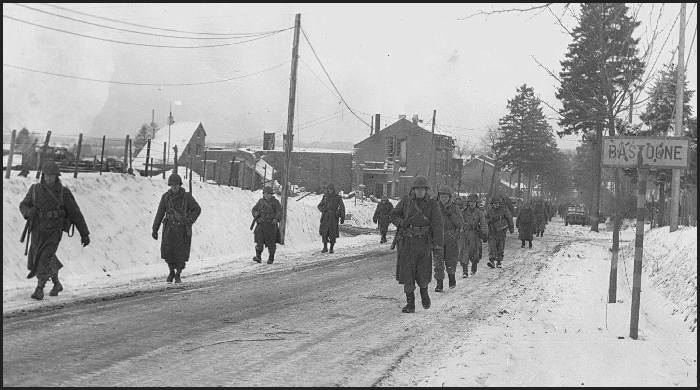 US soldiers at Bastogne
US soldiers at Bastogne
Some US paratroopers have covered their foxholes by stacking up dead Germans, some have used branches of pine, to conceal their positions. They had their trusty M1s loaded, and ready to die for a city, with a name, most of them could not even pronounce. These top-notch, battle-hardened US paratroopers, in their shiny jump boots, and with their silver jump wings on their chests have just left the battlefields of Holland, after a disastrous operation to capture a „bridge too far”, before being thrown into combat against the renewed Blitzkrieg of the German Army. Without proper winter gear, weakened by the battles before, they were loaded onto trucks, hurried to Bastogne, and since then, held the line against the waves of German infantry and armor, and kept their ground against a well-prepared and determined enemy.
On the Eastern Front, at the same time, there was not a division, but a battalion of paratroopers, from an other country, preparing to defend an other city, against a similarly overwhelming enemy force. They had their rubber-soled leather jump boots, and their silver jump wings too, and they were just as desperate to defend the small Hungarian villages of Ipolyszalka and Letkés, on the banks of the rivers Ipoly, and Garam, as their American counterparts.
The attackers this time were the Soviets, who have tried to cut off the retreating Hungarian and German forces on the historical Hungarian soil of Upper Hungary, territory of the modern-day Slovakia. The Soviet Red Army has aimed to capture, or destroy the two bridges over the fast flowing rivers, to trap the retreating enemy, when the Hungarian paratroopers have arrived. They were battle-hardened. The 2nd Parachute Battalion of the Royal Hungarian 1st Honvéd „vitéz Bertalan Árpád” Parachute Regiment have seen much since its formation in October 1944. In this time of combat they were used as a „firefighter” unit, thrown from one bloody battle to an other in defense against the unstoppable Soviet Red Army. As one of the paratroopers have recalled:
„The paratrooper unit, despite the circumstances, have been considered to be an elite fighting unit. Because of this we were ordered from one place to an other, depending on how big the trouble was. It seemed that there are plenty of places like that, because we were always on the road. If we were able to stop the Russians for two days, it counted as a success.”
They had only six weeks of training, and borrowed German weapons to fight with, but were motivated, and eager to go to war, so well known from the newsreels. The unit consisted of battle-hardened veterans of the 1st Parachute Battalion, returning from the Eastern Front, and novice recruits from the Hungarian pre-military youth organization, the Levente Movement.
These young, mostly 17-18 years old boys have undergone a rigorous pre-military airborne training, using jump towers, close formation drill, and tons of athletics to get them ready for military service. The youngsters were medically fit, motivated to volunteer for airborne service, and eager to defend the „Ancient Land” as their instructors, and school teachers have told them to do.
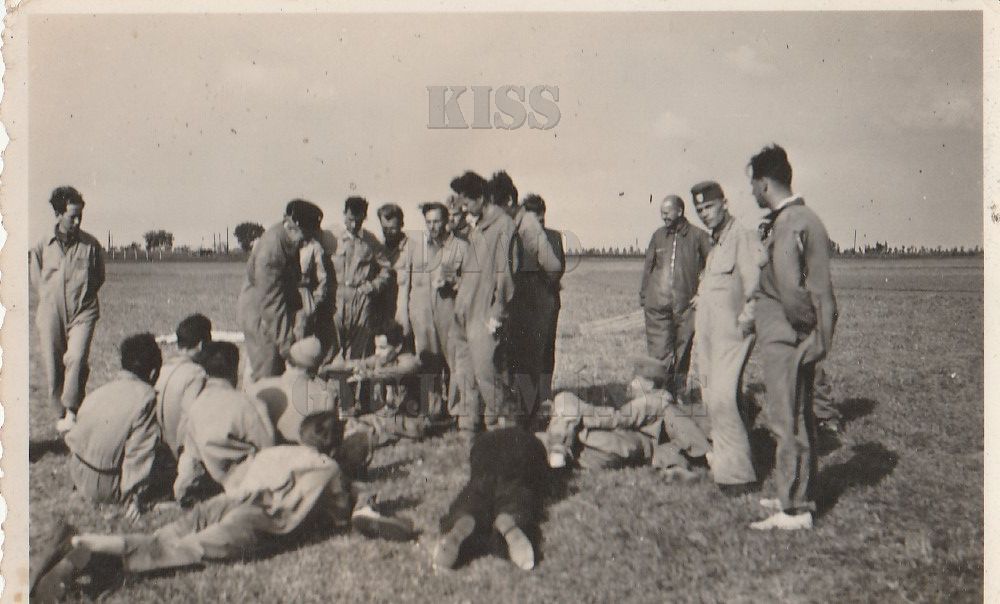 Young Levente paratroopers with their instructors at Pápa, Hungary
Young Levente paratroopers with their instructors at Pápa, Hungary
These young paratroopers have just earned their jump wings after one single parachute jump out of an airplane. Normally there would have to be four jumps, but due to the wartime situation, the commanders of the paratroops have made a compromise, to save up time for infantry training. The fresh paratroopers have been trained by veterans of the Eastern Front in small unit tactics, weapons handling, and live fire exercises.
To speed up training, and to familiarize the young soldiers with the sounds, and smell of the battlefield, target shooting have been conducted by half of the unit hiding between the targets on the firing range, and by the others scoring hits. By this method the young paratroopers had an opportunity, to get used to being shot at, and learn the different sounds of the different weapons fired at them.
Hand grenade training has been executed in a similar way. After throwing a Hungarian, or German offensive stick grenade, the young paratrooper had to jump on his feet, and charge through the smoke of the explosion. This way of training has been proven to be dangerous. One of the platoon leaders of the Heavy Weapons Company, a seasoned veteran paratrooper has just injured himself while demonstrating hand grenade tactics to his soldiers.
Weapons of the paratroopers in the unit were a mixture of Hungarian, and German pieces. There were 43M Danuvia „Király” submachine guns, and 37M „Frommer” pistols at hand, mixed with MG42 machine guns, and Panzerfaust 30 RPGs. The soldiers, before leaving to the front were handed a truckload of German Kar. 98k Mauser rifles, as they had to leave behind their Hungarian rifles for a training unit.
Uniform of the Hungarian paratroopers have not been similar to the ones worn by the US paratroops in Bastogne. They had wool service trousers, and tunics, inherited from the infantry units. Over this uniform some wore a leather jacket, with wool sleeves, which has been a cozy and warm piece of uniform in the winter, and a highly sought after piece of uniform by the soldiers. Others had their heavy wool greatcoats with them, and also there were some in a mixture of military and civilian clothes, to keep warm.
On his head a soldier on duty had to wear a cover, and most of the paratroopers have chosen to wear only their field cap. There was less, who has voted for the infantry steel helmet, designed after a German pattern. Footwear has been the special jump boots designed for parachute training and combat jump, and worn by career NCOs and Officers of the unit most of the time. These jump boots were handed out as a sign of pride, and also proven to be really useful footwear on the frontlines, compared to the low service boost and puttees of the late war Hungarian infantry.
 Two Hungarian paratroopers (both survivors of the fighting at the river Ipoly) in 1945 in their combat uniforms
Two Hungarian paratroopers (both survivors of the fighting at the river Ipoly) in 1945 in their combat uniforms
The Hungarian paratroopers had two more distinguishing pieces of uniform to wear. One has been the jump wings mentioned before, and the other was the badge of the Szent László Division.
The paratrooper badge has been introduced in 1940, and featured a skull sitting on top of two daggers, in front of a winged parachute. The eye-catching badge has been a source of pride amongst the elite soldiers of the regiment, and has been featured on most of its artistic depictions, like on the paratrooper memorial, gifts engraved with the badge, and even on postcards, or sheets of paper. The parachutist badge has been worn above the right pocket, or ont he side of caps, and also on the end of the left sleeve of the wool greatcoat.
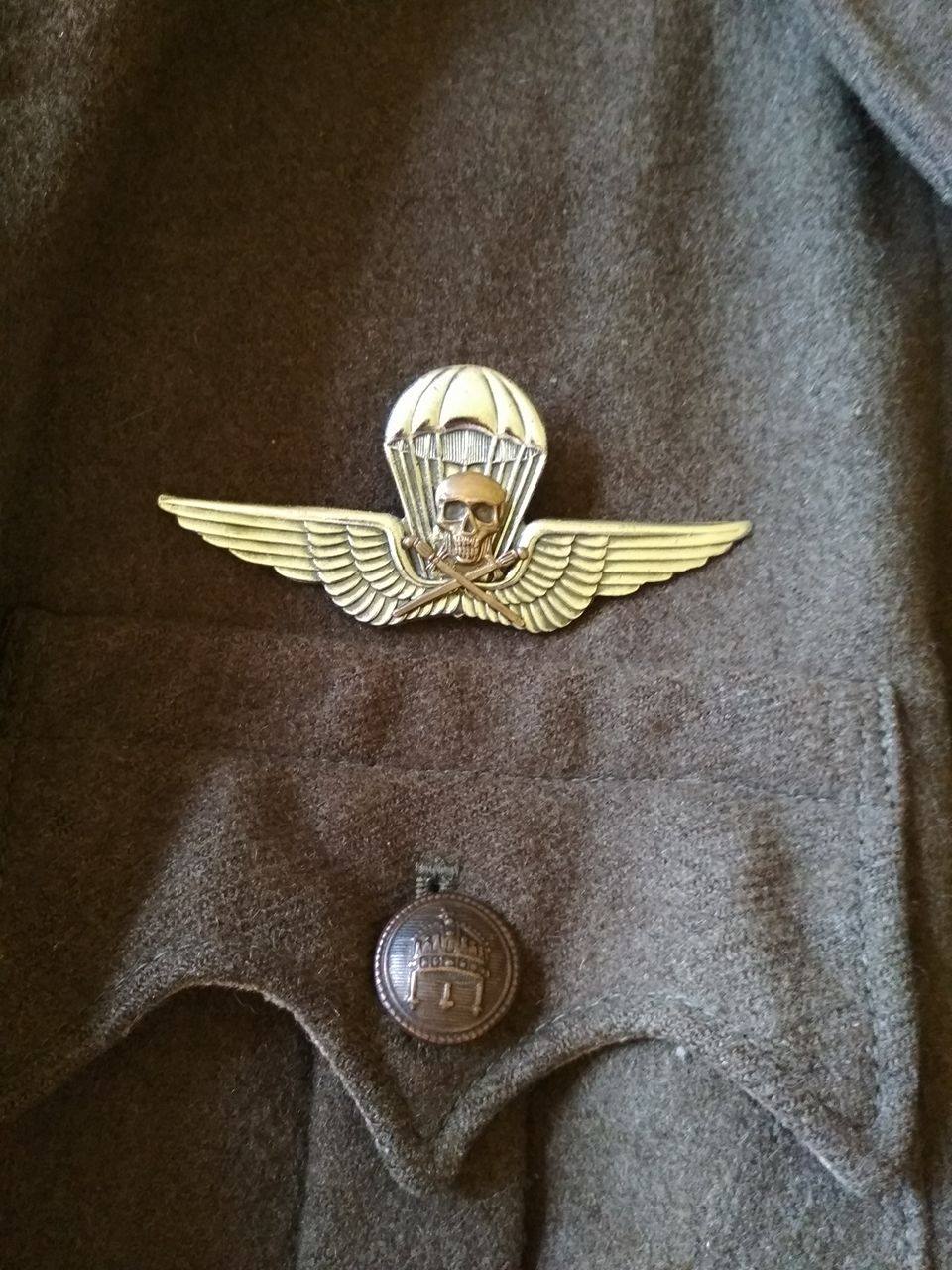 The Hungarian 1940M paratrooper badge
The Hungarian 1940M paratrooper badge
The badge of the Szent László Division, of which the 1st Parachute Regiment has been part of, featured a hatchet surrounded by a wreath. The hatchet is a symbol of the denominator of the Division, (Saint) Ladislaus the 1st, the knight-king, protector saint of the infantry in Hungary. The badge has not been worn exclusively by the paratroopers, but made them earn the nickname of „bastards with hatchets” by the Soviets. The soldiers have worn the badge on their left pocket, or on the side of their caps.
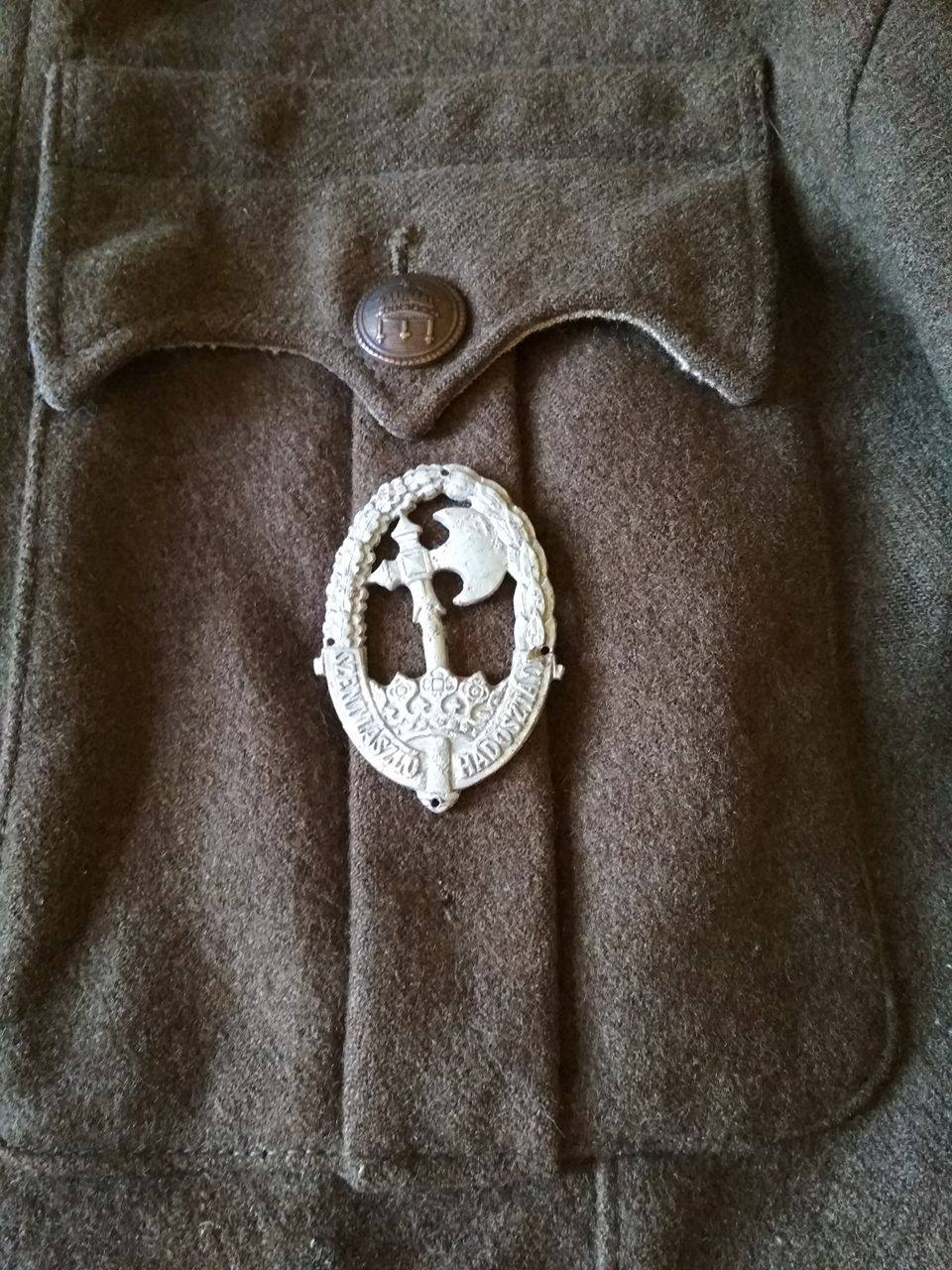 Badge of the Szent László Division - from around Ipolyszalka
Badge of the Szent László Division - from around Ipolyszalka
Armed, and equipped like this, the Hungarian paratroopers have arrived on the 19th of December 1944 to their destination, riding a column of blue-colored public transport busses. They were soon spotted by the Soviet mortar-men of the 6th Guards Airborne Division, and the column has come under fire from behind. Loaded with ammunition, ordnance, and soldiers, the convoy has just realized that they have passed the enemy positions. So the paratroopers have turned around, and rushed to the bank of the river Ipoly, where they have dug in.
The paratroopers were in a valley, and the enemy had overlooking positions from the hillside around, so the first objective was to push the Soviets off the hillside, and consolidate a bridgehead at Letkés. It has been accomplished by the paratroopers in a day. The ensuing battle however took a huge toll.
Meanwhile in Bastogne, the US paratroopers of the 101st Airborne Division have started a fight against the elements. The legendary “E” Company of the 506th Parachute Infantry Regiment, after arriving to the line on the very same day, as their Hungarian counterparts, have taken up positions overlooking the town of Foy, in a thick forest of pine trees. The paratroopers were under constant German artillery fire from the nearby town, thus unable to light fires to warm up. On the next day, the 20th of December, the snow just started to cover everything, then, the temperature rapidly dropped.
The lack of winter gear, and the constant sitting in the shallow foxholes combined had its effect on the soldiers. Frostbite, and trench foot were as dangerous enemies, as the Germans in the nearby town were pouring down artillery shells on the US positions.
In the meantime the Hungarian paratroopers had similar challenges to face. As one of them noted:
“We were in the first lines for nearly eight weeks now, without any rest. The casualties, we have suffered, the low grade, and slow arrival of supplies, and the inadequate amount of ammo we have got, started to take its toll. We were no longer looked like an elite unit. Maybe it was solely the discipline forced on us, and our will to survive, that kept our company together. (…) Hungrily, frozen to death, without ammunition it is really hard to conduct miracles.”
On the 21st of December has arrived the Air Riflemen Regiment of the Szent László Division to the vicinity to reinforce and relieve the exhausted paratroopers. These soldiers were part of the Royal Hungarian Air Force, and consisted of mostly guards of the airfields, grounded pilots, and aircrew, without planes to fly, airplane mechanics without planes and tools to repair, and even clerks, and supply drivers of the air force, without supplies, to administrate. For example one of the company commanders of the unit was a 38 years old pilot, in the rank of Captain, who have been before led various air force training facilities, like one for aerial photography!
These soldiers had a hasty ground combat course behind them, and have been armed with various weaponry of Hungarian origin, dressed in different uniforms of the Air Force, and the infantry, then rushed into combat. Of course they were inexperienced, and had a mixed morale, and combat efficiency. The paratrooper, quoted above remembers to the events after the arrival of the airforcemen like this.
“We were ordered to fall back after dark to the nearby village, called Ipolyszalka, if I remember correctly. On the next morning, while we have gathered around the cart bringing our breakfast, someone opened up on us from a very close distance, destroying the pot, with our food in it. It was a gloomy, foggy December morning, with low visibility. As it turned out later, the unit we have been relieved by have just forgot to close a 300 meters long section of the frontline. By using the gap the Russians have infiltrated our lines without any resistance, and followed us to the village. Their first thing to do was to put on the uniforms of our dead, and the captured, thus making it harder to recognize who is the enemy, and who is a friend.
When we have revealed this, we have tried to talk to each other all the time, to avoid killing each other. We were hunting house-to-house all day long to clean the village from the unwanted guests.”
While the Hungarian paratroopers have hunted for Soviets disguised in enemy uniforms, the US Army had similar problems with Germans, disguised as Americans. As the Hungarian-born, world famous war photographer, Robert Capa remembered, his journey to correspond from the Siege of Bastogne had several long stops, arranged by members of the US Military Police, or MP.
“At every third milestones we were stopped by extremely strict MPs. They have checked our identification papers, and permits thoroughly, and asked about the ever-changing passwords. After we have given them the passwords, they got on me, and asked a ton of crazy, and confusing questions. – What is the capital of Nebraska? – they have asked. – Who won the last baseball-championship? – They have enlightened us that behind our communication lines there have been dropped an army of German spies and saboteurs, who at this moment are roaming the countryside with perfect English language skills, dressed in American uniforms. Back to me, my English skills were far from perfect, and my accent has not been amongst the most fashionable ones. Which is worse I had not got the slightest clue about the capital of Nebraska. Thanks to this we were captured several times, causing hours of delay.”
US infantry crossing the snow-covered Belgian fields en-route to Bastogne (Robert Capa photo)
At the very same day, on the 22nd of December 1944 while both Capa and the Hungarian paratroopers have struggled with disguised enemies in various ways, the commander of the encircled Bastogne have got a letter from the German commander of the troops around the ruined town.
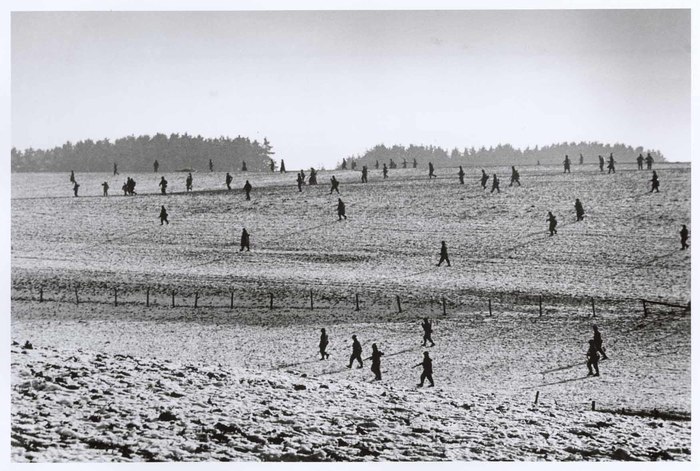
In this letter the German commander demanded the unconditional surrender of all of the American troops facing an enemy, superior in firepower to the US forces, to save the civilian population of Bastogne from further suffering. The letter closes with a reference to the “well-known American humanity.” The answer of the American commander, General McAuliffe, to this detailed letter written in official English style delivered on the same day, has been remembered since as one of the most heroic moments of the US military in WWII, and marks the birth of the legend of the 101st Airborne Division.
“NUTS!”
 Copy of the Christmas LEtter from Gen. McAuliffe sent to all members of the 101st Airborne Division
Copy of the Christmas LEtter from Gen. McAuliffe sent to all members of the 101st Airborne Division
Unfortunately the Hungarian counterparts of the US paratroopers had no way to answer to such a letter, as the Soviets have only sent salvoes of mortar fire, but we can be sure that they would have reacted in a similar way, as their motto supports a similar worldview.
“The paratrooper does not know fear of death, or captivity!”
After moving to Ipolyszalka, the Hungarian paratroopers were stationed there for some resting, while the air riflemen were fighting in their former positions, to keep the corridor, and the bridge intact as long as possible. The paratroopers needed this rest a lot, as they have lost a lots of men due to combat wounds. As one of the paratroopers have recalled:
“Slowly, but surely there were less and less of us. Tasks, which have been done by twelve of us, now had to be done by six or seven men.”
The rest have not been an easy one, as Soviet artillery have harassed the new quarters of the paratroopers. On the 22nd of December, a Soviet artillery shell opened up the wall of a silo, where a squad of paratrooper mortarmen were resting. The soldiers have been lucky, as the wall of the silo fell outwards, hurting nobody. The excited soldiers ran outside dressed up, but mostly bare-feet as they have removed their jumpboots for more comfort. The counter attack of this handful of soldiers have cleared an artillery position, and forced to flee a company of Soviet soldiers – by accident.
The paratroopers were also visited by the commander of their division, the former commanding officer of the 1st parachute battalion, General vitéz Zoltán Szügyi. He has promised his soldiers a ticket home, three months of leave, and to spend Christmas with their families. Two days later his soldiers were in positions to hold the line along the river Ipoly.

Artistic depiction of a Hungarian late war paratrooper of the Szent László Division
Christmas closed in for both US, and Hungarian paratroopers. The encircled defenders of Bastogne have endured all that the Wehrmacht, and the Waffen-SS could rally in the last great offensive of the Western front. On the 24th of December, the legendary “Easy” company of the 506th Parachute Infantry Regiment has been attacked, and defended its position, killing at least 38 enemy soldiers in the battle.
Food-shortage became a permanent problem in Bastogne. The Christmas dinner of Captain Richard “Dick” Winters have consisted of “five beans and a cup of weak soup.” The US Army Air Force have managed to drop supplies on the city, but those were only enough for one day to feed the soldiers, and there were also civilians to think of.
Outside the encirclement Robert Capa and the 4th Armored Division have closed in on the encircled town, like cavalry did on the besieged settlers in the Wild West. As the combat photographer remembers.
“It was Christmas Night, the skies were full of stars. For the night we have stopped, and gathered around the tanks. I have passed around my silver flask, the cold cognac have warmed us up a bit. The men, killing Germans and guys with bad accent cuddled up and started singing the Silent Night. At this moment a bright star lit up, like in Bethlehem, and stood still above Bastogne. The German air force have brought its present for the 101st airborne division. Cursing we have climbed back to our tanks.”
The Hungarian paratroopers had no hope of any friendly tanks showing up, they had to hold with what they have got. The main goal of the bridgehead was to secure the retreating German forces a safe route, and the soldiers of the Szent László Division held their ground. On the 24th of December though came the order to retreat from Letkés, and blow up the bridge linking Ipolyszalka to Letkés. After the disciplined withdrawal of the Hungarian forces, the bridge has been blown up. It is typical to the Hungarian paratroopers, that two of them have disregarded the order to fall back, and left behind up to the last moment, firing an MG-42 machine gun to slow down the advancing Soviets, as one of them would “not leave behind this perfect gun for the Russians.” After the MG-42 has malfunctioned, the duo of daredevils has sprinted across the bridge before it got blown up. The commander of the bridge guards have been a Hungarian paratrooper officer, 1st Lt. Karsay, without any German language skills, while the engineers, who have rigged the bridge for demolition were Germans.
On Christmas Eve the paratroopers were quartered in the houses of Ipolyszalka. The Soviets were shelling the village extensively. One of the paratroopers, Pvt. Gusztáv Béla Ábel remembers as it follows:
“Thanks to Pista, we have again got dinner, as he has somehow found a duck, and they have started cooking it, in a small farmhouse, where our platoon have got quartered. Around midnight an artillery shell hit the roof of the house, and exploding collapsed it on us. Dinner canceled, and we were three men shorter again now.”
By an other memoir of the platoon commander of Pvt. Ábel, Sgt. Béla Béres, the incident looks differently:
“On the 24th, around nighttime one of our guys, Lajos Sáhó ran to the yard, holding a dead goose under his arms. I have bashed him! Caught in on the streets! – He told me. They have skinned it and wanted to cook it. After ten minutes or less, and other kid rolled in a 30 liter barrel. I was angry at first, but these kids became so close to me, that I have calmed down. We were hungry too. I have ended up helping them. With PFC Imre Kovács we have cut tree for the fire. The guys started cooking the goose in the room. By this time we were shelled by long range mortars at Ipolyszalka. In the kitchen there was light, we were waiting. Around 19:00 There was a muffled bang, and the door of the room have opened up. Maybe I have got blasted, as I have heard everything from a distance. Looked up, and seen the stars above, through the roof of the room. The roof have completely collapsed by the force of some heavy projectile. Some of my soldiers were straggling around, some have died instantly. It was 19:00PM. Killed in action: Pvt. József Gábris (…) Pvt. Lajos Sáhó (…) Pvt. József Horváth have lost his left leg, his blood poured out in the kitchen. A cat showed up, and started licking up the hot blood. I have kicked it out to the yard.”
By the time of these events the 1./II. Parachute Battalion have lost most of its manpower. The size of the battalion after one month of constant life in the first line, reduced from 1400 paratroopers to around 630 able-bodied veterans, meaning that the unit have lost 55% of its strength from the 27th of November, to the 27th of December. Furthermore in their position, without a bridge to defend, or a mission to complete, they have been encircled by the Soviets.
The Hungarian paratroopers at Ipolyszalka started their breakthrough on the 27th of December 1944. Their goal was to reach friendly lines at the river of Garam. As one of them recalls:
“(…) Waiting for some miracle, there were no orders for falling back, until it was too late. By this, as a Christmas present we were given an order, rare in the Hungarian armed forces. We had to bring only our weapons, and ammunition, everything else would stay back! On this cold, foggy winter morning everyone felt that we will have a hard day. I think no none was disappointed! We have tried to break through to the Garam without any support. We have attacked the Russian lines at least four times, but we have not got enough strength to break through. We were few, and the Russians were up on a hillside, shooting at us like from a lodge.”
After their initial attacks the Hungarian paratroopers have considered to split up their force and try to reach the Hungarian lines in small groups. This event have marked the annihilation of the 1./II. Parachute Battalion, as only around 50 or 70 soldiers have escaped from the Soviet encirclement. The others, fighting to their last bullet have been both taken prisoners by the Soviets, or killed in the ensuing battle, sometimes mowed down by the enemy after surrendering. One of the lucky survivors was Pvt. Gusztáv Ábel Béla. We can reconstruct the events by his memoires.
The small group of survivors have concluded, that there will be no surrendering. They have left behind every bits of equipment, that could have make noise, or hinder their mission. They have collected and distributed their remaining ammunition as fair as they can do. There were dead and wounded comrades all around, the exhausted paratroopers had no means to help them, or bury them. The small group in which Pvt. Ábel has taken part have hid in a haystack, waiting for the night to fall. After midnight they have crossed the Soviet lines without any problem, thanks to the fact that the Soviets were confident in their success.
Reaching the river Garam it became clear, that the hard part is yet to come. The fast mountain river, with ice sheets on its surface is a demanding obstacle even for able-bodied hikers, not to mention the tired, battle-weary, wounded soldiers, carrying rifles and ammunition, dressed in wool uniforms and bandages.
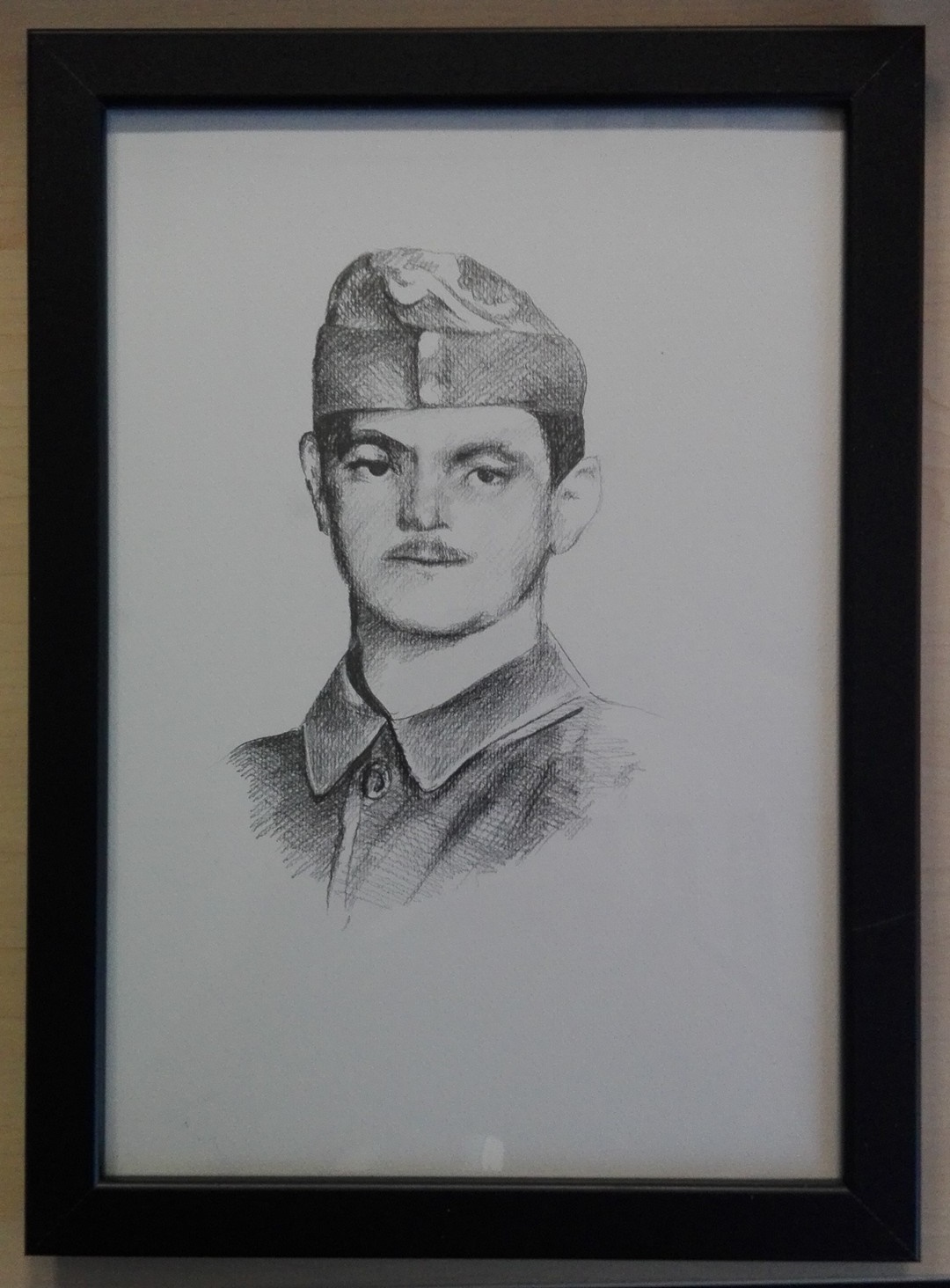 Portrait of Pvt. Gusztáv Béla Ábel, one of the survivors of the battle at the rivers of Ipoly-Garam
Portrait of Pvt. Gusztáv Béla Ábel, one of the survivors of the battle at the rivers of Ipoly-Garam
The paratroopers decided that by using their service belts they will cross the river on a makeshift rope line. Three of the best swimmers in the unit took the belts, and crossed, while the others have used the belts for crossing. In the process three paratroopers have been washed away by the ice sheets, and drowned. The frozen paratroopers have arrived to their lines after five more kilometers of hiking, and then taken care by villagers, and comrades. The exhausted paratroopers were heading for hospital, and to re-organize at their nest, Pápa, Hungary, to take part in the last stage of the war retreating West, and finally capitulating in an impressive parade in front of British forces in 1945.
Meanwhile at Bastogne, the tide of war has just turned. On the 25th of December the relieving forces have reached the city, breaking the siege. Most of the US paratroopers have never admitted that they would have needed any help… In the first half of January 1945 the last German offensive on the Western front have been defeated, the German forces were in retreat. The end of the war was imminent.
By comparing these two battles, fought during the same cold winter of 1944, by similarly trained, led, and used forces, in similar situations, against an overwhelming enemy, surrounded, but never intimidated, we would like to salute both the American, and of course the Hungarian paratroopers who have died during the freezing battles of the last winter of WWII.
They were fighting on opposing sides in a total war, but fought with the same bravery and determination to uphold the standards and legend of the airborne forces, which are now part of the modern armies of both countries. Thus making the “Battered Bastards of the Bastion of Bastogne”, and the “Bastards with Hatchets” brothers in arms.
Sources:
- Robert Capa: Kissé Elmosódva – Emlékeim a Háborúból (Park könyvkiadó, 2003.)
- Steven E. Ambrose: Az Elit Alakulat – Az amerikai 101. légiszállítású-hadosztály 506. ezrede Easy századának útja Normandiától Hitler Sasfészkéig (Gabo kiadó 2001.)
- Dr. Farkas Jenő: A Szent László Hadosztály katonái írták… (Magánkiadás)
- Ábel Béla Gusztáv: Göröngyös utakon…! – Visszaemlékezések (kézirat a szerző tulajdonában)
- Huszár János: Honvéd ejtőernyősök Pápán 1939 - 1945 – A Magyar Királyi „vitéz Bertalan Árpád” Ejtőernyős Ezred története (Jókai Kör Pápa, 1993.)
NOTE: Two of the sources are also published in English. As these sources are translated to Hungarian, there could be differences between the translation of the author of this article, and the original English text.

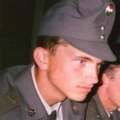

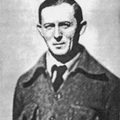
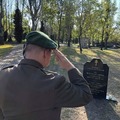

A bejegyzés trackback címe:
Kommentek:
A hozzászólások a vonatkozó jogszabályok értelmében felhasználói tartalomnak minősülnek, értük a szolgáltatás technikai üzemeltetője semmilyen felelősséget nem vállal, azokat nem ellenőrzi. Kifogás esetén forduljon a blog szerkesztőjéhez. Részletek a Felhasználási feltételekben és az adatvédelmi tájékoztatóban.